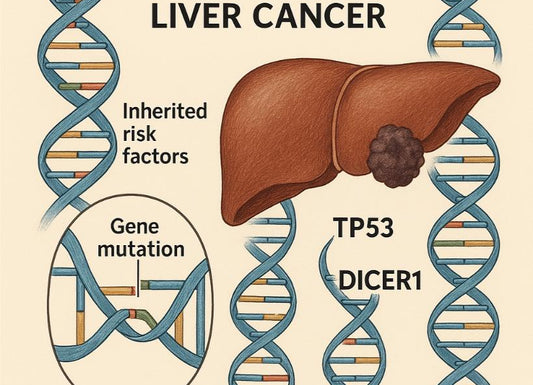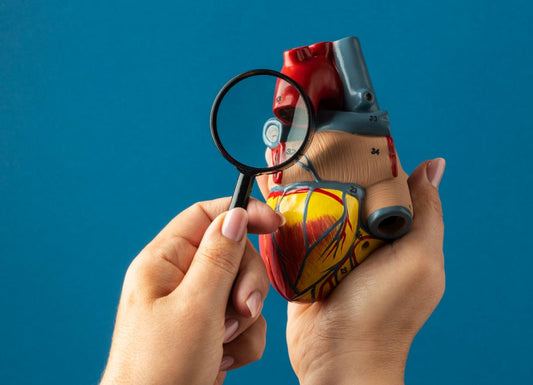How Long Can Hepatitis B Survive Outside the Body?
 Written By
Jaclyn P. Leyson-Azuela, RMT, MD, MPH
Written By
Jaclyn P. Leyson-Azuela, RMT, MD, MPH

When you care about your health or that of your loved one, it is normal to ask “how long can hepatitis B survive outside the body.” Hepatitis B virus (HBV) can survive outside the body for up to 7 days. It can remain infectious for this duration of time. This survival capability makes it significantly more resilient than many other pathogens. It creates important implications for transmission prevention. Understanding how long this virus persists on various surfaces helps protect healthcare workers, families, and the community from accidental exposure.
Research shows that environmental factors like temperature, humidity, and surface type dramatically influence survival times. This article will help you understand more about the survivability of hepatitis B outside the body so that you can take precautionary measures.
Key Insights
-
Hepatitis B virus (HBV) can survive outside the body for at least 7 days
-
Environmental factors like temperature, humidity, and surface type influence HBV survival; cooler, moist settings extend viability.
-
Non-porous surfaces (metal, plastic, glass) support longer survival than porous ones (fabric, wood, paper).
-
Dried blood is particularly hazardous, with HBV persisting for up to 4 weeks or more.
-
Effective prevention requires vaccination (95% effective), proper disinfection (bleach-based), and avoiding shared items.
-
Over 850,000 Americans live with chronic hepatitis B, many undiagnosed due to asymptomatic early infection.
-
High-risk groups include healthcare workers, injection drug users, and sexually active adults; they should pursue testing and vaccination.
-
Room temperature stability keeps HBV infectious on household surfaces, underscoring the need for strict hygiene.
What Is Hepatitis B and How Is It Transmitted?
Hepatitis B is a liver infection caused by the hepatitis B virus (HBV), transmitted primarily through blood, semen, or other body fluids. It can develop into either acute or chronic conditions, which affects millions across the United States. According to data, about 850,000 Americans have chronic HBV infection, which makes it a very significant public health concern.
The bloodborne pathogen ranks among the most infectious viruses known to medical science. HBV demonstrates 50-100 times higher infectivity rate than HIV during sexual contact even when they are of the same viral load. Healthcare workers face particularly elevated risks due to occupational exposure, though universal precautions have dramatically reduced transmission rates in the medical setting.
The virus targets liver cells specifically, causing inflammation that can progress to serious complications, such as:
-
Cirrhosis
-
Hepatocellular carcinoma (HCC)
Early-stage infections usually present no symptoms, which allows unintentional transmission between individuals through various means.
What Are Common Transmission Methods for Hepatitis B?
Several primary modes of transmission for Hepatitis B exist, including:
-
Sexual contact
-
Needle sharing
-
Mother-to-child transmission (also known as “vertical transmission”)
-
Accidental needlestick injury
-
Sharing of personal items like toothbrushes and towels
HBV transmission through blood occurs even through small or microscopic amounts. Unlike respiratory viruses, HBV does not spread through casual contact, food sharing, or airborne droplets, making blood exposure the most critical factor in transmission risk assessment.
How Long Can Hepatitis B Virus Survive Outside The Body on Different Surfaces?

HBV can survive for at least 7 days outside the host or body at room temperature. Dried blood poses the highest risk for transmission due to concentrated viral particles that maintain infectivity over extended periods. Environmental stability of hepatitis B virus demonstrates resilience compared to other pathogens.
Surface composition of the virus significantly affects survival duration, with non-porous materials like plastic and metal, which provides more stability than porous substances. Microorganisms, such as viruses, may survive in inanimate objects, which may be contracted by any individual touching them.
The virus demonstrates particular stability on medical equipment, making proper sterilization protocols essential in clinical settings. Research indicates that standard cleaning procedures may not eliminate infectious particles. This will require specific disinfection methods to ensure complete viral inactivation.
How Long Can Hepatitis B Survive in Dried Blood?
Dried blood creates an ideal environment for HBV preservation, with documented survival times including:
-
At least 7 days
-
May take 4 weeks
-
Extended periods in specific environmental setting
There is also significant risks associated with settings where blood exposure may occur like:
-
Tattoo parlors
-
Barbershops
-
Dental offices
The concentration of viral particles in dried blood is directly proportional to its infectious potential, which means that even in small amounts it can result in dangerous transmission.
Infectious dried blood can maintain its transmission capability throughout the documented survival period, which requires immediate attention when encountered. Operating protocols mandate treating all dried blood as potentially infectious regardless of age or appearance.
How Long Can Hepatitis B Survive at Room Temperature?
Standard indoor room temperature allows HBV to survive for several weeks. The standard room temperature is between 68–77°F. Temperature variations within the typical household ranges show minimal impact on viral stability though extreme heat accelerates degradation.
Cooler temperatures can also prolong survival times significantly, with refrigerated temperatures potentially maintaining the infectivity of the virus for months. This characteristic makes proper storage of biological samples critical in laboratory settings.
Room temperature stability creates ongoing transmission risks in shared living spaces, specifically when blood contamination occurs frequently in touched surfaces like doorknobs, bathroom fixtures, or kitchen counters.

What Factors Influence the Survival Time of Hepatitis B Outside the Body?
Factors like temperature, humidity, surface type, and viral load can all contribute to HBV survival outside the body.
Cooler, moist environments extend viability beyond 7 days. High viral concentrations found in acute infections increase transmission risks substantially compared to chronic cases with lower viral loads. By understanding these factors, you can predict contamination risks in different settings.
Healthcare workers are especially vulnerable to HBV infection transmission. The initial viral load present during contamination events directly impacts survival duration and transmission potential. Acute hepatitis B cases with high viral replication create more dangerous contamination scenarios than chronic infections with suppressed viral levels.
What Temperature and Humidity Effects Impact Hepatitis B Survival?
Environmental conditions create significant variations in HBV stability:
-
Below 4°C (39°F)
-
Room temperature
-
High heat above 85°F
-
Low humidity
-
High humidity
Changes in the temperatures to either extremes predictably direct survival patterns. Prevention strategies must account for seasonal variations and regional climate differences affecting viral persistence.
What Types of Surfaces Allow Longer Hepatitis B Survival?
As mentioned earlier, there are specific surface characteristics that allow longer hepatitis B survival duration. It includes the following:
-
Non-porous surfaces
-
Porous surfaces
-
Medical equipment
-
Personal items
Hepatitis B on needles is particularly dangerous for healthcare workers due to needlestick injury (NSI), which makes vaccination very crucial among this group of people.
Therefore, a precise guideline on cleaning surfaces must be followed because standard and universal precautions may not be enough to achieve full viral inactivation across all materials and scenarios.
How Can You Prevent Transmission from Contaminated Surfaces?
Preventing HBV transmission may be done by using bleach-based disinfectants and avoiding sharing personal items. Proper cleaning of surfaces and using appropriate disinfectants kill viruses in minutes.
Additionally, vaccination represents the most effective long-term protection. As documented, it has 95% efficacy rates. Healthcare protocols emphasize both environmental control and personal protection strategies.
The hepatitis B vaccine provides lifelong immunity for most recipients, making vaccination programs the cornerstone of public health prevention efforts. Adult vaccination rates remain suboptimal in many US communities, creating ongoing transmission risks despite available protection.
Disinfection methods proven effective against HBV include specific chemical agents and contact times validated through laboratory testing. Environmental cleaning alone without proper disinfectants cannot guarantee viral elimination from contaminated surfaces.
What Are Effective Disinfection Methods for Hepatitis B?
EPA-approved methods for inactivation of HBV include:
-
1:10 bleach solution–Mix 1 part household bleach with 10 parts water, 10-minute contact time
-
70% isopropyl alcohol–Effective with 5-minute contact time on non-porous surfaces
-
EPA-registered disinfectants–Hospital-grade products specifically labeled for HBV inactivation
-
Heat sterilization–Autoclave temperatures (121°C for 15 minutes) ensure complete viral destruction
Contact times represent minimum requirements for viral inactivation, with longer exposure providing additional safety margins. Fresh bleach solutions maintain maximum effectiveness, while stored mixtures lose potency over time.
US-approved products undergo rigorous testing to verify HBV elimination claims, providing healthcare facilities and households with reliable options for contamination control.
What Safe Handling Practices Reduce Hepatitis B Risks?

Bloodborne pathogen safety requires comprehensive protective measures:
-
Personal protective equipment
-
Avoid sharing personal items
-
Safe sex practices
-
Proper wound care
-
Professional medical care
US testing resources include community health centers, private laboratories, and at-home testing options for individuals seeking HBV screening. Many insurance plans cover routine hepatitis B testing for high-risk populations.
For general liver health, you may also employ the convenience of at-home liver testing, which helps identify abnormalities in your liver function in between doctor’s appointments.
Healthcare professionals recommend regular screening for individuals with occupational exposure, multiple sexual partners, or injection drug use history.
When Should You Seek Testing or Medical Advice for Hepatitis B?
Seek testing if exposed to blood or body fluids or if you're at high risk such as healthcare workers. Early detection prevents chronic complications. Current guidelines recommend universal screening for adults born in countries with high HBV prevalence, pregnant women, and individuals with specific risk factors. When intervention is done early, it can prevent progression to chronic infection and reduce transmission to others.
Many hepatitis B infections remain asymptomatic during acute phases, making testing the only reliable detection method. Hepatitis B blood tests in the US are widely available through various healthcare providers and laboratory networks.
When symptoms are present, they are non-specific and may only be present in fewer than half of the cases. It includes:
-
Fatigue
-
Nausea
-
Abdominal pain
-
Jaundice
Chronic hepatitis B often produces no symptoms until liver damage becomes advanced.
What Are Risk Factors for Hepatitis B Infection?
High-risk categories for risk factors hep B include:
-
Unprotected sexual contact
-
Injection drug use
-
Healthcare workers
-
Travel to endemic areas
-
Household contacts
-
Dialysis patients
-
Immunocompromised patients
Research shows that sexual transmission in heterosexual couples accounts for approximately 40% of infections.

What Hepatitis B Tests Are Available in the US?
Hepatitis B testing options include several diagnostic approaches:
-
Surface B antigen test (HBsAg)
-
Surface antibody test (anti-HBs)
-
Core antibody test (anti-HBc)
-
At-home testing kits for liver monitoring
-
In-clinic testing
Results interpretation requires healthcare provider consultation, as different antibody patterns indicate various stages of infection, immunity, or vaccination status.
Quick Summary Box
-
Hepatitis B virus survives at least 7 days on surfaces, with potential for weeks under optimal conditions, making it highly infectious compared to other pathogens
-
Environmental factors like temperature, humidity, and surface type significantly influence viral survival, with cooler, moist conditions extending viability beyond standard estimates
-
Effective prevention combines vaccination (95% effective), proper disinfection with bleach-based solutions, and avoiding shared personal items that might contain blood
-
Over 850,000 Americans live with chronic hepatitis B, yet many remain undiagnosed due to asymptomatic infection patterns requiring proactive testing
-
High-risk groups including healthcare workers, sexually active adults, and injection drug users should pursue regular screening and vaccination to prevent transmission
References
Barrett, J. (2018, October 31). Study Demonstrates High Stability of Hepatitis B Virus. Pharmacy Times. https://www.pharmacytimes.com/view/study-demonstrates-high-stability-of-hepatitis-b-virus
CDC. (2013). HEPATITIS B & SEXUAL HEALTH. https://www.cdc.gov/hepatitis-b/media/HepBSexualHealth.pdf
CDC. (2024a, May 13). Clinical Overview of Hepatitis B. Hepatitis B. https://www.cdc.gov/hepatitis-b/hcp/clinical-overview/index.html
CDC. (2024b, May 14). Clinical Testing and Diagnosis for Hepatitis B. Hepatitis B. https://www.cdc.gov/hepatitis-b/hcp/diagnosis-testing/index.html
Dalton, M. (2024, September 9). Call to Action: Strategies to Improve Adult Immunization in the US. NFID; National Foundation for Infectious Diseases. https://www.nfid.org/resource/call-to-action-strategies-to-improve-adult-immunization-in-the-us/
Hardison, R., Nelson, S., Barriga, D., N Feliciano Ruiz, Ghere, J., Fenton, G., Lindstrom, D., James, R., Stewart, M., Lee, S., Calfee, M., Ryan, S., & Howard, M. (2022). Evaluation of surface disinfection methods to inactivate the beta coronavirus Murine Hepatitis Virus. Journal of Occupational and Environmental Hygiene, 19(8), 455–468. https://doi.org/10.1080/15459624.2022.2088768
Humans, I. W. G. on the E. of C. R. to. (2012). HEPATITIS B VIRUS. In www.ncbi.nlm.nih.gov. International Agency for Research on Cancer. https://www.ncbi.nlm.nih.gov/books/NBK304352/
Inoue, T., & Tanaka, Y. (2016). Hepatitis B virus and its sexually transmitted infection - an update. Microbial Cell, 3(9), 420–437. https://doi.org/10.15698/mic2016.09.527
Kim, Y., Loucks, J., & Shah, M. (2022). Efficacy of Hepatitis B Vaccine in Adults with Chronic Liver Disease. Journal of Pharmacy Practice, 36(4), 839–844. https://doi.org/10.1177/08971900221078742
Kramer, A., & Assadian, O. (2014). Survival of Microorganisms on Inanimate Surfaces. Use of Biocidal Surfaces for Reduction of Healthcare Acquired Infections, 7–26. https://doi.org/10.1007/978-3-319-08057-4_2
Nelson, N. P., Easterbrook, P. J., & McMahon, B. J. (2016). Epidemiology of Hepatitis B Virus Infection and Impact of Vaccination on Disease. Clinics in Liver Disease, 20(4), 607–628. https://doi.org/10.1016/j.cld.2016.06.006
PROTOCOL FOR TESTING THE EFFICACY OF DISINFECTANTS USED TO INACTIVATE DUCK HEPATITIS B VIRUS AND TO SUPPORT CORRESPONDING LABEL CLAIMS . (2000, August). Environmental Protection Agency. https://www.epa.gov/sites/default/files/2015-10/documents/hbvprotocol.pdf
Rakowska, P. D., Tiddia, M., Faruqui, N., Bankier, C., Pei, Y., Pollard, A. J., Zhang, J., & Gilmore, I. S. (2021). Antiviral surfaces and coatings and their mechanisms of action. Communications Materials, 2(1), 1–19. https://doi.org/10.1038/s43246-021-00153-y
Than, T. T., Jo, E., Todt, D., Nguyen, P. H., Steinmann, J., Steinmann, E., & Windisch, M. P. (2018). High Environmental Stability of Hepatitis B Virus and Inactivation Requirements for Chemical Biocides. The Journal of Infectious Diseases, 219(7), 1044–1048. https://doi.org/10.1093/infdis/jiy620
Thompson, S. C., Boughton, C. R., & Dore, G. J. (2003). Blood-borne viruses and their survival in the environment: is public concern about community needlestick exposures justified? Australian and New Zealand Journal of Public Health, 27(6), 602–607. https://doi.org/10.1111/j.1467-842x.2003.tb00606.x
U.S. Department of Health and Human Services. (2019, January 30). Hepatitis B Basics. HHS.gov. https://www.hhs.gov/hepatitis/learn-about-viral-hepatitis/hepatitis-b-basics/index.html
Vivian Efua Senoo-Dogbey, Lillian Akorfa Ohene, & Wuaku Delali Adwoa. (2024). Occupational Exposure to Hepatitis B Virus, Disease Burden and Pathways for Postexposure Prophylaxis Management: Recommendations for Healthcare Workers in Highly Endemic Settings. Infection Prevention in Practice, 100354–100354. https://doi.org/10.1016/j.infpip.2024.100354
Yacoub, R., Al Ali, R., Moukeh, G., Lahdo, A., Mouhammad, Y., & Nasser, M. (2010). Hepatitis B vaccination status and needlestick injuries among healthcare workers in Syria. Journal of Global Infectious Diseases, 2(1), 28. https://doi.org/10.4103/0974-777x.59247

Jaclyn P. Leyson-Azuela, RMT, MD, MPH, is a licensed General Practitioner and Public Health Expert. She currently serves as a physician in private practice, combining clinical care with her passion for preventive health and community wellness.



